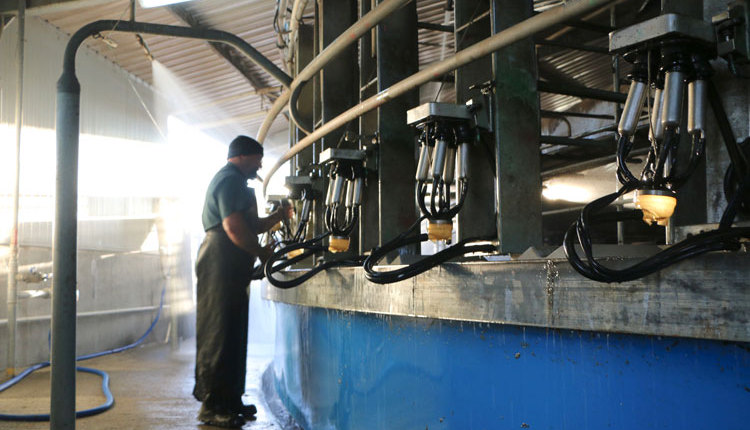
The mystery illness that has caused dairy cattle in and around the Texas Panhandle to experience drops in milk production and rumination, thick milk, and other secondary symptoms has been identified as a strain of highly pathogenic avian influenza (HPAI).
The Texas Department of Agriculture worked with USDA and its Animal Plant and Health Inspection Service (APHIS) on the confusing situation that began to gain more attention just a few weeks ago. Diagnostic tests proved unhelpful until the last couple of days. Additional testing was initiated because farms have also reported dead wild birds on their properties, an APHIS statement said on Monday. It is now believed that wild migratory birds are the source of the infection.
A statement put out by Texas agriculture commissioner Sid Miller on Monday said that three dairies in Texas and one in Kansas had tested positive for the disease. No number of affected animals has been released.
“At this stage, there is no concern about the safety of the commercial milk supply or that this circumstance poses a risk to consumer health,” said APHIS. Initial testing found no changes that would indicate the virus is more transmissible to humans. “In addition, pasteurization has continually proven to inactivate bacteria and viruses, like influenza, in milk,” it continued.
Just last week, HPAI was confirmed in a goat kid in Minnesota that lived on a farm where the disease had been detected in poultry. That was the first time HPAI had been found in livestock in the U.S.
Besides the drop in milk production and unusual milk appearance, some affected cows were reported to develop a fever, and some also showed signs of clinical mastitis or pneumonia. Miller’s statement said that production may be reduced for seven to 10 days until symptoms subside.
HPAI has caused tremendous damage to the poultry industry in recent years, largely due to the need for depopulating flocks where the extremely infectious disease is detected. The Texas Department of Agriculture is not predicting that will be the case in this situation.
“Unlike affected poultry, I foresee there will be no need to depopulate dairy herds. Cattle are expected to fully recover,” Miller’s statement concludes.
Earlier reports indicated that after cows recovered from clinical symptoms of the illness, some returned to their previous levels of milk production while others did not. However, there has been little to no mortality related to the illness. Symptoms are most often seen in older, mid-lactation cows. Cases have not been reported in calves, heifers, or dry cows.
The state is strongly encouraging all Texas dairies to adhere to strict biosecurity protocols including limiting farm access to essential personnel, disinfecting vehicles that arrive or leave the premises, isolating affected animals, and destroying all contaminated milk. It is also advised to clean and disinfect all waterers and to isolate any drinking water that could be contaminated by waterfowl like ducks and geese.











